Select Language

By Alessandro Parodi
(Reuters) - China in February again led purchases of electric vehicles, which increased worldwide versus a year ago, even as European Union tariffs on China-made EVs reduced sales of some brands, research firm Rho Motion said on Wednesday.
Overall sales, including battery electric and plug-in hybrid vehicles, rose by 49% in February year-on-year to 1.2 million, but the researchers said the figure was distorted by the timing of Chinese New Year.
Compared with January, figures were down 3%.
The EU imposed tariffs on China-made cars at the end of October after an anti-subsidy investigation.
Rho Motion Data Manager Charles Lester said sales of MG, which is owned by China’s SAIC and was hit by some of the biggest tariffs, had fallen sharply.
SAIC’s sales growth of cars made in China was on average 19% lower in the months between November 2024 and January 2025 in Europe and European Economic Area, compared to the January to October 2024 period, Lester said.
Sales of Honda (NYSE:HMC), which produces some battery-electric (BEV) models of the Dongfeng Honda brand in China, Mercedes, Geely, Tesla (NASDAQ:TSLA), Renault (EPA:RENA)’s Dacia Spring and smaller Chinese brands Nio (NYSE:NIO) and Xpeng (NYSE:XPEV), were also impacted by the tariffs, Lester said.
BYD (SZ:002594), however, is gaining ground in Europe and increasing its market-share worldwide despite the tariffs, he said.
Because of the timing of Chinese New Year holidays this year, China recorded a yearly increase of 76% in February, and of 35% for the first two months of the year.
Sales in Europe were up 19% in the month compared with a year earlier - the second consecutive month of double-digit growth since EU CO2 emission targets came into effect - with Germany up 40% in the first two months of 2025.
North America’s EV sales grew by 17% in the month from a year before, but U.S. President Donald Trump’s stance towards electrification will lead to reduced yearly forecasts for the country, Lester said.
Mexico’s EV market more than doubled due to Chinese EV imports that started "in bulk" last year, Rho Motion said in a statement.
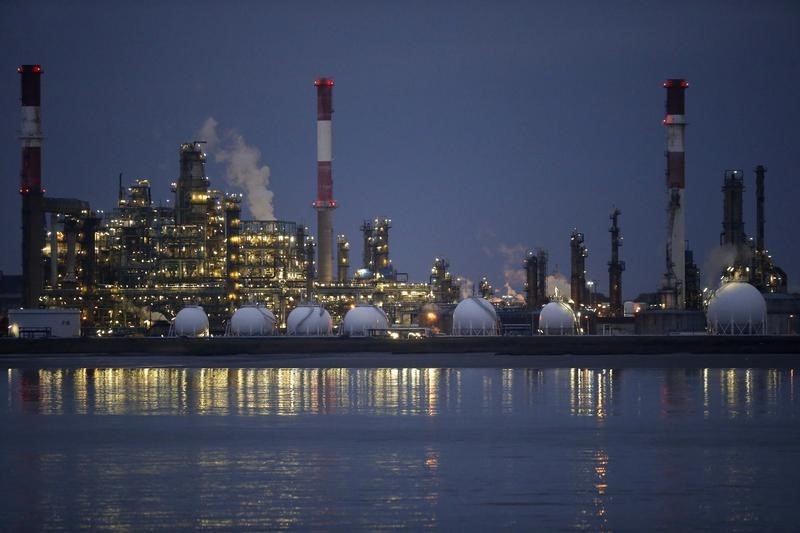
Oil prices fell in Asian trade on Tuesday, coming back in sight of an over three-year low amid growing concerns that a global economic slowdown and escalating trade war will dent demand.
Crude prices were nursing steep losses over at least the past three weeks, as uncertainty over U.S. President Donald Trump’s tariff agenda grew after his flip-flopping on tariffs against Canada and Mexico.
Trump’s imposition of 20% tariffs on China- the world’s biggest oil importer- also dented sentiment, as Beijing retaliated with its own measures.
But the biggest weight on oil prices was growing fears of a U.S. economic slowdown, especially as Trump embarks on a major overhaul of trade practices and government policies. Trump in a recent interview declined to rule out the possibility of a recession.
Brent oil futures expiring in May fell 0.7% to $68.77 a barrel, while West Texas Intermediate crude futures fell 0.8% to $65.15 a barrel by 21:23 ET (01:23 GMT).
US recession fears batter oil markets
Fears of a U.S. economic slowdown grew in recent weeks, especially amid increased disruption from Trump’s agenda. The 47th U.S. President announced a host of measures to slash government spending, reduce federal workers, and hash out new trade agreements through increased tariffs.
Trump on Sunday declined to rule out the possibility of a recession, stating that he expected his agenda to cause some near-term disruption. He repeated his threats that plans for higher trade tariffs will come through in early-April.
Fears of a recession were also furthered by weak readings on retail spending and the labor market for the first two months of 2025. Markets fear that worsening growth in major economies, especially the U.S., will dent oil demand in the coming months, and could especially hurt prices if supply increases.
U.S. inflation data due later in the week is set to provide more cues on the economy.
Weak inflation data from China, released over the weekend, also showed the country was still struggling to shore up local demand. Beijing’s promises of more stimulus support were met with muted enthusiasm in recent weeks.
Increased supply bets weigh on oil
Trump’s plans to bring down energy prices also weighed, after he signed orders to ramp up domestic production. He also called on the Organization of Petroleum Exporting Countries to increase output- a demand the cartel complied with last week.
A mix of slowing demand and rising supplies stand to severely dent oil prices in the coming months.
Focus this week is on the OPEC’s monthly report, due on Wednesday, for more cues on demand forecasts and the cartel’s plans for production.

(Reuters) - Solar energy accounted for 84% of new electricity generation capacity added to the U.S. power grid last year, but the industry faces a challenging future with the new U.S. administration’s energy policies, a report published on Tuesday said.
The country installed 50 gigawatts (GW) of new solar capacity in 2024, the Solar Energy Industries Association (SEIA) and Wood Mackenzie groups said in the report, adding that 2024 was largest single year of growth by any energy technology in over two decades.
WHY IT IS IMPORTANT
The solar industry was a major beneficiary of subsidies contained in former President Joe Biden’s landmark 2022 climate change law, the Inflation Reduction Act (IRA).
The Trump administration has said it was reviewing federal funding plans, and any removal of tax credits issued under the 2022 Inflation Reduction Act would impact clean energy deployment.
The clean-energy sector has been on high alert since the election of Donald Trump, whose first executive orders prioritized unleashing U.S. fossil-fuel production, paused federal wind projects and froze funding for clean-energy projects from two Biden-era laws.
BY THE NUMBERS
Total U.S. solar capacity is expected to reach 739 GW by 2035, the report said, warning that changes to federal tax credits, supply chain availability, and permitting policy will cause slowdown in solar deployment.
The low case forecast showed a 130 GW decline in solar deployment over the next decade compared to the base case, representing nearly $250 billion of lost investment, according to the report.
KEY QUOTES
"Last year’s record-level of installations was aided by several solar policies and credits within the Inflation Reduction Act that helped drive interest in the solar market," said Sylvia Levya Martinez, Principal Analyst, North America Utility-Scale Solar for Wood Mackenzie.
"We still have many challenges ahead, including unprecedented load growth on the power grid. If many of these policies were eliminated or significantly altered, it would be very detrimental to the industry’s continued growth."

By Pranoy Krishna
BENGALURU (Reuters) -India’s February consumer inflation likely eased below the Reserve Bank of India (NSE:BOI)’s medium-term target of 4.0% for the first time in six months on moderating food price rises, a Reuters poll showed, bolstering expectations of interest rate cuts.
As fresh winter produce hit markets over the past few months, food items - which make up nearly half of the inflation basket - saw a sustained slowdown in price increases.
That marked a welcome reprieve from supply disruptions last year when unpredictable monsoons and intense heat waves sent food prices soaring, often by double digits.
A Reuters poll of 45 economists taken March 4–10 predicted inflation as measured by the annual change in the consumer price index fell to 3.98% in February from 4.31% in January.
Forecasts for the data, set to be released on March 12 at 1030 GMT, ranged from 3.40% to 4.65%, with nearly 70% of respondents expecting it to come in at or below the RBI’s medium-term target of 4.0%. Only five predicted it would exceed January’s reading.
"We see a continued slowdown in vegetable price rises," said Gaura Sengupta, chief economist at IDFC First Bank (NASDAQ:FRBA).
"The other, even more positive fact is that we are also seeing softness in pulse prices as well as cereals, which are the most sticky part of food inflation because their harvest season is not as frequent."
With inflation comfortably within the RBI’s 2–6% target range, economists say the central bank is likely gearing up for another interest rate cut in April to support slowing economic growth, following a quarter-point reduction in February.
A separate Reuters poll showed it would be a short and shallow rate-cutting cycle.
Meanwhile, warnings from the India Meteorological Department that summer and heatwaves could start early have raised concerns that inflation could rise again once winter supplies start to run out.
"We do expect the correction in vegetable prices to start reversing possibly as early as March, with risks from heatwaves and weather-related disruptions to crops," wrote Rahul Bajoria, India & ASEAN economist at Bank of America.
His team projects headline CPI inflation at 4.8% this fiscal year but expects it to edge down to 4.1% in the next year, with risks evenly balanced from lower commodity prices and a weaker rupee.
That’s in line with predictions of 4.8% and 4.3% in a Reuters poll conducted last month.
Core inflation, which excludes the more volatile food and energy components, was expected to have inched up slightly to 3.82% year-on-year in February from January’s estimated 3.70%.
Wholesale price index-based inflation was expected to have risen to 2.36% in February from 2.31% in January, the survey showed.

Investing.com-- U.S. stock index futures fell Monday evening after steep declines on Wall Street, as investors weighed recession risks stemming from President Donald Trump’s tariff policies.
S&P 500 Futures fell 0.5% to 5,595.0 points, while Nasdaq 100 Futures dropped 0.8% to 19,306.0 points by 20:02 ET (00:02 GMT). Dow Jones Futures were largely unchanged at 41,965.0 points.
Recession fears spark sell-off, Nasdaq slumps 4%
A Reuters poll showed that economic risks are escalating for Mexico, Canada, and the U.S. due to the turbulent rollout of Trump tariffs, creating significant uncertainty for businesses and policymakers.
Concerns over inflation in the U.S., which were already growing, have intensified, making it more likely that the Federal Reserve will hold off on policy changes for the foreseeable future. Meanwhile, the risk of recession is increasing across all three countries, according to the survey.
Trump has refrained from predicting whether the U.S. might experience a recession in 2025 amid escalating trade tensions.
Stock markets experienced notable declines on Monday, with the S&P 500 falling 2.7%, the Dow Jones Industrial Average 2%, and the NASDAQ Composite slumping 4%, primarily driven by substantial losses in major technology companies.
Tesla Inc (NASDAQ:TSLA) shares saw a 15% drop, while market darling NVIDIA Corporation (NASDAQ:NVDA) stocks fell 5.1%.
Broadcom Inc (NASDAQ:AVGO) shares fell 5.4%, while Arm Holdings (NASDAQ:ARM) stock declined 7.3%.
Tracking the downturn in Bitcoin, shares of Strategy, previously known as MicroStrategy (NASDAQ:MSTR), slumped 16.7%. Coinbase Global Inc (NASDAQ:COIN) stock plunged 17.6%.
Govt shutdown risks add to the negative mood; US CPI awaited
A government shutdown is possible if Congress fails to pass a temporary funding bill before the fiscal deadline on March 14.
The Republican-controlled House introduced a six-month stopgap spending bill on March 8, with a vote scheduled for Tuesday.
If approved by Congress, the proposal will require 60 votes in the Senate to reach Trump’s desk, necessitating some Democratic support to avert a government shutdown.
Meanwhile, market participants now keenly await the crucial consumer price inflation report due on Wednesday, which will provide key insights ahead of the Federal Reserve’s interest rate decision scheduled for next week.
Last week, Fed Chair Jerome Powell indicated that the central bank would maintain a patient stance on interest rates, saying the central bank was cautiously assessing Trump’s recent economic policy changes, including tariffs and federal worker layoffs.

SYDNEY (Reuters) - Australian consumer sentiment hit a three-year high in March as slowing inflation and the first interest rate cut in over four years helped lift the gloomy mood for consumers, a survey showed on Tuesday.
The Westpac-Melbourne Institute index of consumer sentiment rose a solid 4% in March from February. The index was 13.6% higher on a year earlier, although at 95.9 showed pessimists still outnumbered optimists.
The Reserve Bank of Australia last month cut interest rates by a quarter-point to 4.1%, having held them steady for over a year. However, policymakers still warned that prospects of further easing are not guaranteed.
Swaps imply a scant chance that the RBA will follow up with another cut in April, but a move in May is about 80% priced in. Rates are seen reaching 3.5% by the end of the year.
"The RBA’s February decision has bolstered confidence that interest rates will continue to move lower," said Matthew Hassan, Westpac’s head of Australian macro-forecasting.
"Consumers are becoming more positive on the labour market, expectations suggesting a ’soft landing’ has already been achieved."
The breakdown of the survey showed the outlook for family finances over the next year was much better, with the index up 3.2% in the month to 108.3, showing optimists were in the majority.
The survey’s measure of the economic outlook for the next 12 months firmed 3.6%, while the outlook for the next five years jumped 4%.
Buyer sentiment also jumped with the measure of whether it was a good time to buy a major household item jumping 6.9% to 97.1.
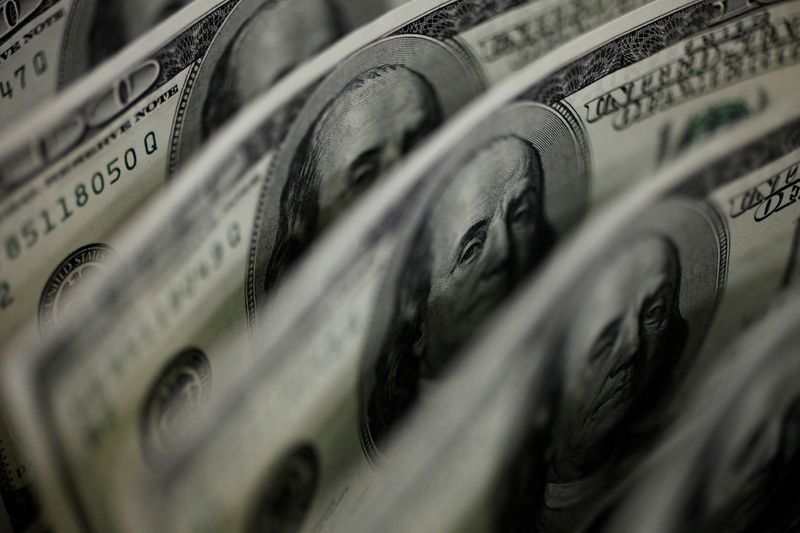
By Ankur Banerjee
SINGAPORE (Reuters) -The dollar was softer on Monday and trading near its lowest level in four months against major currencies as concerns over a global trade war troubled investors, lifting safe havens the yen and the Swiss franc.
Markets have been fixated on trade tensions as U.S. President Donald Trump slapped tariffs on top trading partners only to delay some of them for a month amid growing signs and fears of a U.S. economic slowdown.
That has led to investors losing faith in the U.S. economy which has been outperforming its peers. On currency futures markets, investors have slashed net long dollar positions to $15.3 billion from a nine-year high of $35.2 billion in January.
Risk-averse investors have sought the Japanese yen and Swiss franc instead sending both currencies to multi-month highs. On Monday, the yen was 0.25% firmer at 147.68 per dollar, just below the five-month high of 146.94 it touched on Friday.
The Swiss franc hit a three-month high of $0.87665 on Monday. The euro was steady at $1.0842 after clocking its best weekly performance since 2009 last week boosted by Germany’s game-changing fiscal reforms.
The dollar index, which measures the U.S. currency against six others, was last at 103.83 on Monday, stuck near a four-month low touched last week.
The dollar fell more than 3% last week against major rivals, clocking its weakest weekly performance since November 2022 as investors fret about tariffs and its impact on the economy.
Adding to investor jitters, Trump in a Fox News interview on Sunday declined to predict whether the U.S. could face a recession amid stock market concerns about his tariff actions on Mexico, Canada and China.
Trump’s comments sent U.S. stock futures lower, while the benchmark 10-year U.S. Treasury yields fell 3 basis points in Asian hours, weighing on the dollar.
"If Trump is looking to pursue a weaker dollar, lower yields ... then certainly that adds to this idea that maybe the dollar can’t strengthen or can’t move aggressively higher," said Parisha Saimbi, Asia-Pacific rates and FX strategist at BNP Paribas (OTC:BNPQY) in Singapore.
"FX investors are in a broad de-risking mode."
Investors were also digesting data from Friday that showed U.S. job growth picked up in February, but cracks are emerging in the once-resilient labour market amid a chaotic trade policy.
Nonfarm payrolls increased by 151,000 jobs last month after rising by a downwardly revised 125,000 in January, the Labor Department’s Bureau of Labor Statistics said. Economists polled by Reuters had forecast payrolls advancing by 160,000 jobs after a previously reported 143,000 gain in January.
Citi strategists said the data should keep the Federal Reserve comfortable staying on hold at this month’s meeting, but details of the jobs report, including a rise in the unemployment rate and drop in participation, suggest the labour market could soften further this spring.
"The slowdown in consumer spending, upcoming government job loss and decline in equity prices will likely have the Fed cutting policy rates again in May," they said in a note.
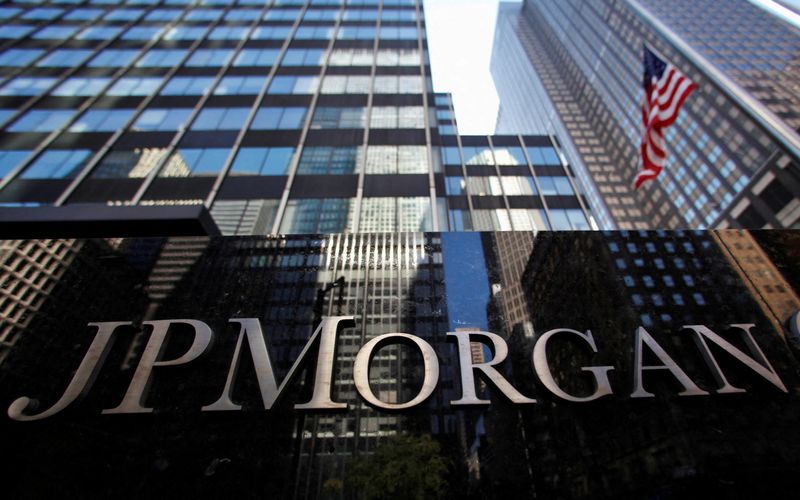
(Reuters) - J.P.Morgan joined Wall-Street peer Goldman Sachs to forecast a boost to the euro area’s economic growth for 2025 on the back of Germany’s fiscal loosening reforms.
Similar to Goldman, JPM expects growth to increase by 0.1 percentage point to 0.8%. For 2026, JPM expects 1.2% growth, up by 0.3 percentage points.
"This revision is primarily driven by Germany, but we also anticipate slightly stronger growth across the rest of the region from spillovers and slightly looser fiscal policy," said JPM economists in a note dated late Friday.
Last week, the parties in talks to form Germany’s new government agreed to try to loosen fiscal rules that would amount to a nearly trillion-euro borrowing boom to fund defence and infrastructure spending.
However, the brokerage also cautioned that uncertainty from Trump’s tariff policy could likely weigh on economic growth in the coming months and estimated a slight uptick to the euro area’s inflation for this year and next.
Making its sixth cut since June, the European Central Bank (ECB) lowered the deposit rate to 2.5% on Thursday, but warned of "phenomenal uncertainty", including the risk that trade wars and more defence spending could fuel inflation, raising the prospect of a pause in its policy easing next month.
In the same note, JPM said it does not expect the ECB to cut rates in April compared to its earlier projection of a 25 basis point cut. The brokerage expects only two interest rate cuts this year - in June and September - versus its prior estimate of three rate cuts.
"We highlight risks that the potential imposition of US tariffs on European goods could also push them to a live meeting in April and back to the back-to-back approach," JPM added.
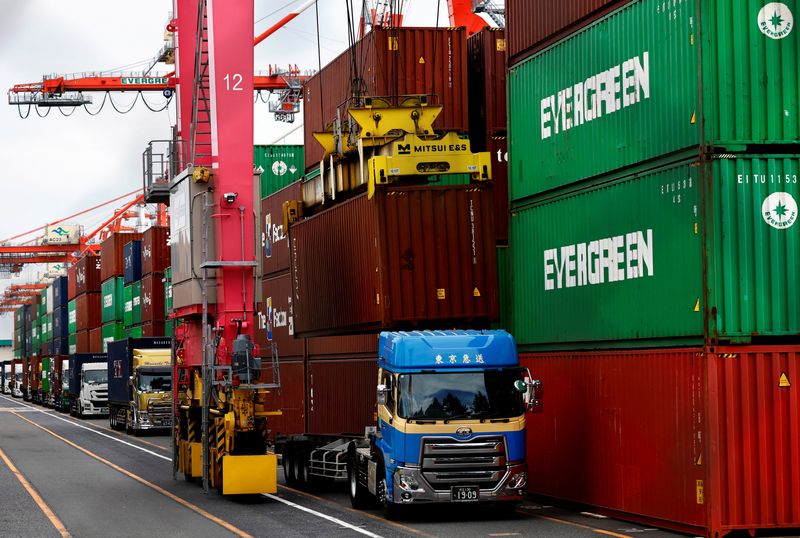
By Leika Kihara
TOKYO (Reuters) - Japan recorded a current account deficit in January for the first time in two years as a weak yen inflated the cost of imports, finance ministry data showed on Monday.
A boost in imports of smartphones and electronic parts in the run-up to the Lunar New Year holiday, which started at the end of January, also pushed up total imports during the month, the data showed.
Japan’s current account deficit in January stood at 257.6 billion yen ($1.75 billion), bigger than a median market forecast for a deficit of 230.5 billion yen, the data showed.
Imports rose 17.7% in January from a year earlier, while exports rose 2.1%, according to the data.
($1 = 147.5000 yen)
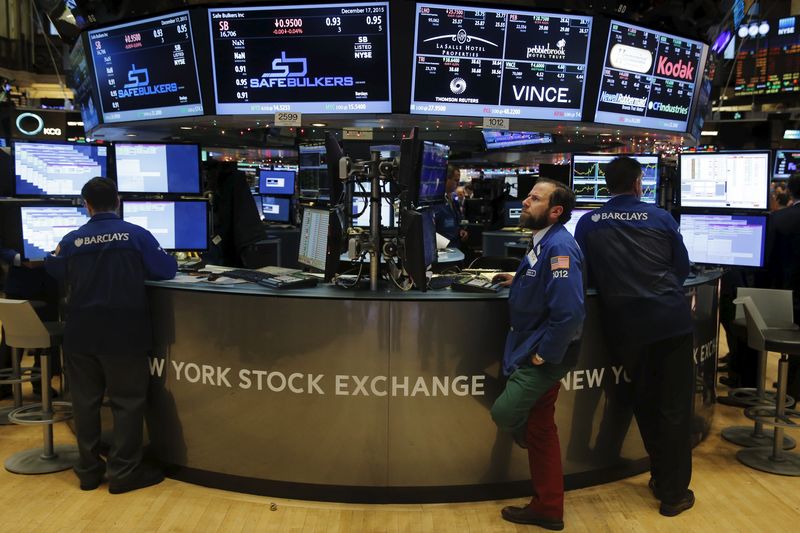
U.S. stock indexes declined on Sunday evening after steep weekly losses on Wall Street, as investors remained wary of uncertainty surrounding President Donald Trump’s tariff policies and mulled over Federal Reserve Chair Jerome Powell’s cautious remarks.
S&P 500 Futures fell 0.7% to 5,735.0 points, while Nasdaq 100 Futures dropped 0.9% to 20,045.0 points by 19:41 ET (23:41 GMT). Dow Jones Futures lost 0.5% to 42,611.0 points.
Investors assess Powell’s cautious comments; Feb jobs data
On Friday, Fed Chair Powell indicated that the central bank would maintain a patient stance on interest rates, acknowledging that the U.S. economy remains in a good place despite elevated uncertainties.
Powell highlighted the Fed’s cautious approach in light of President Donald Trump’s recent economic policy changes, including tariffs and federal worker layoffs.
Recent economic data reflected a mixed picture: the U.S. economy added 151,000 jobs in February, slightly below expectations, and the unemployment rate edged up to 4.1%.
Despite these figures, concerns about weaker labor demand and potential layoffs persisted.
The Federal Reserve’s dual mandate—to maintain low inflation and high employment—faces challenges amid these uncertainties. Powell underscored the importance of waiting for clearer economic signals before making policy decisions.
Market participants now keenly await the crucial consumer price inflation report due this week, which will provide key insights ahead of the Fed’s interest rate decision scheduled for March 18-19.
Trump’s shifting trade policies fuel market turmoil
Major U.S. stock indexes experienced heavy weekly losses last week, when Trump imposed 25% tariffs on Mexico and Canada, but later exempted most of the goods for a month, creating uncertainty around his trade policies.
The S&P 500 declined nearly 3% last week, closing at 5,770.20 points, while the Dow Jones Industrial Average fell by 2.2% for the week to end at 42,801.72.
The NASDAQ Composite experienced a 3.5% weekly drop.
Trump also increased tariffs on Chinese goods, which prompted retaliatory levies from China. He is set to implement worldwide reciprocal tariffs from April 2, which could further erode market sentiment.
Meanwhile, Commerce Secretary Howard Lutnick said on NBC’s “Meet the Press” on Sunday that Trump is steadfast in applying tariff pressure on Mexico, Canada, and China due to their handling of fentanyl.

